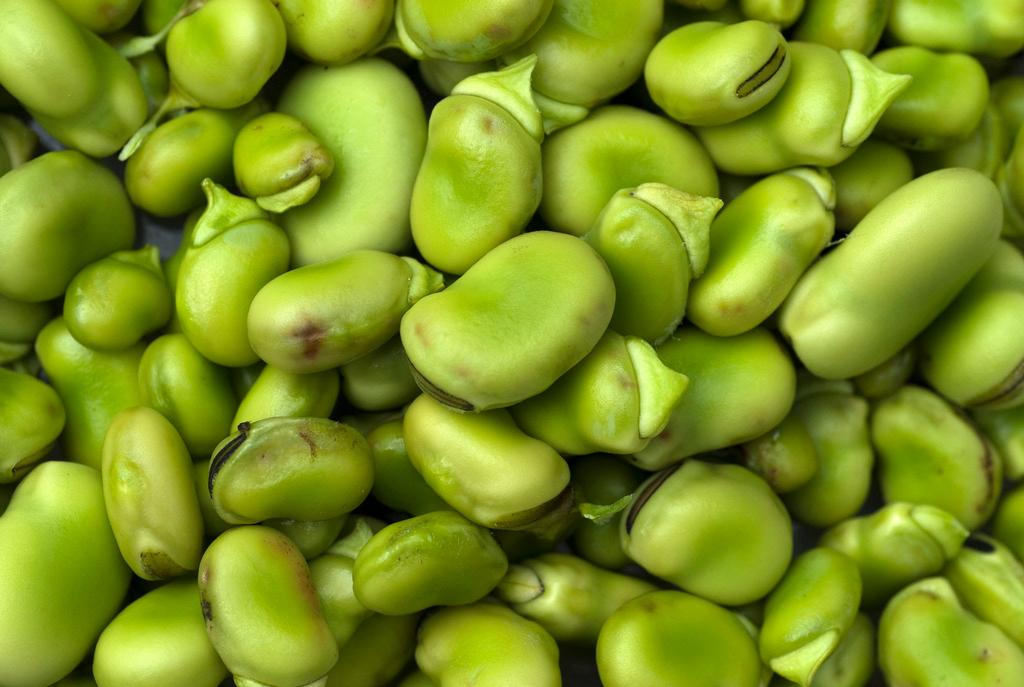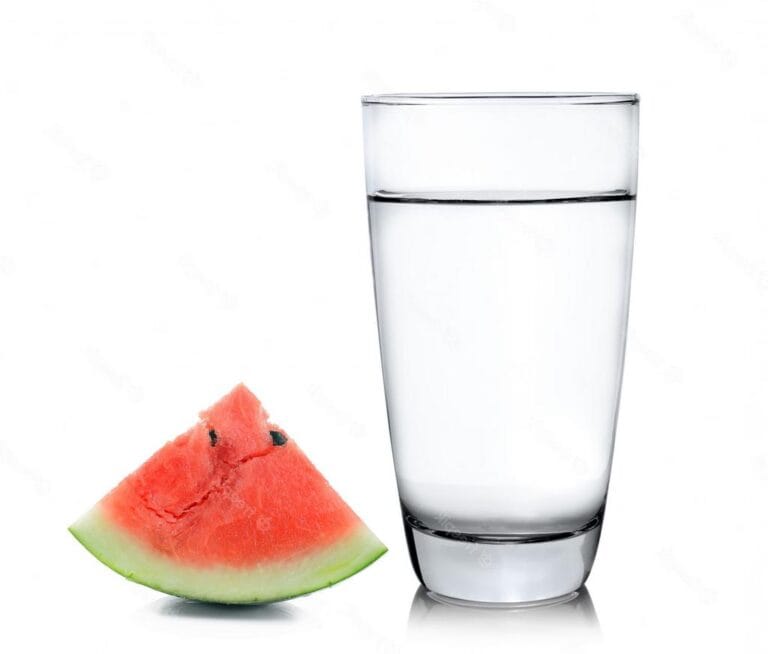Can You Eat Raw Lima Beans? Are Raw Lima Beans Poisonous?

Lima beans, also known as butter beans, are a nutritious food that many people enjoy as a tasty addition to salads, soups, and stews. But have you ever wondered if you can eat them raw? Are raw lima beans poisonous? While they are commonly consumed cooked, some people wonder if they can eat them raw and if it is safe to do so.
No, you should not eat raw lima beans as they contain a toxic compound called linamarin. Eating raw lima beans can cause serious health problems, including vomiting, diarrhea, and even death in extreme cases.
Lima beans are a type of bean that comes from Peru and has been grown there for a very long time. They have a lot of protein, fiber, and important minerals like iron, potassium, and magnesium.
In this article, we will talk about raw lima beans and whether or not they are safe to eat. We’ll talk about the possible risks and benefits of eating raw lima beans and give you the information you need to decide if you want to add raw lima beans to your diet. So grab a cup of tea and get ready to learn more about these delicious and nutritious legumes.
Understanding Lima Beans and Their Nutritional Value
When it comes to beans, the humble Lima bean is often overlooked. However, this small but mighty legume is packed with nutritional value, which makes it an important addition to any diet.
Lima beans are a great way for vegetarians and vegans to get more protein because they are a good source of protein, fiber, and complex carbohydrates. In fact, just one cup of cooked Lima beans contains a whopping 15 grams of protein.
In addition to their high protein content, Lima beans are also rich in fiber. Fiber is important for keeping your digestive system healthy and can also help keep your blood sugar levels in check.
Just one cup of Lima beans contains a whopping 13 grams of fiber, which is over half the recommended daily intake.
Lima beans are also an excellent source of complex carbohydrates. Complex carbs are absorbed more slowly than simple carbs, so they keep your energy level steady. Simple carbohydrates can cause a quick rise in blood sugar levels.
This makes them an ideal food choice for athletes or anyone looking for sustained energy throughout the day. So, next time you’re looking for a nutritious and filling meal, don’t forget about the mighty Lima bean.
Benefits of Eating Lima Beans
Lima beans are a great source of nutrients that are good for the body in many ways. Firstly, they are rich in fiber, which helps keep the digestive system healthy and prevent constipation. This makes them an excellent food choice for those struggling with digestive problems.
Also, the fiber in lima beans can help keep blood sugar levels in check, which is very important for people with diabetes.
Furthermore, lima beans are a great source of plant-based protein. Protein is essential for building and repairing tissues in the body, and it also helps to keep the immune system functioning properly. A diet rich in protein can help to maintain healthy muscles and bones, making it an ideal choice for athletes and those who are physically active.
Lima beans also contain important vitamins and minerals that are vital for overall health. For example, they are an excellent source of folate, which is important for fetal development and can help reduce the risk of birth defects.
They also have iron and magnesium, which are important for making red blood cells and keeping bones and muscles healthy. Additionally, lima beans contain antioxidants, which help to fight off harmful free radicals in the body and prevent oxidative damage.
Overall, there are many good things about eating lima beans, and they are a great addition to a healthy diet.
Can You Eat Raw Lima Beans?
Lima beans, also known as butter beans, are a nutritious legume that can be enjoyed in a variety of ways, from soups and stews to salads and dips. However, a common question that many people have is whether or not they can eat Lima beans raw.
The answer is no—raw Lima beans are not safe to eat. If you’re looking to enjoy the nutritional benefits of Lima beans, it’s important to always cook them thoroughly. Soaking the beans overnight before cooking can also help to reduce cooking time and improve their digestibility.
Additionally, be sure to store your Lima beans properly to prevent them from becoming moldy or spoiling. With a little care and preparation, you can safely enjoy the many health benefits of Lima beans in a variety of delicious dishes.
Are Raw Lima Beans Poisonous?
Raw lima beans have a naturally occurring poison called linamarin that can be very bad for your health if you eat a lot of them. The toxin is in the bean’s outer layer and is meant to protect the plant from insects and other threats.
Cooking lima beans is the most effective way to remove the toxin and make them safe to eat. When lima beans are cooked, the heat breaks down the linamarin, and the toxic compounds are released into the cooking water.
This is why it is important to discard the cooking water and rinse the beans thoroughly before eating. By cooking lima beans the right way, you can get all of their health benefits without putting your health at risk.
It is worth noting that while raw lima beans are generally not safe for human consumption, there are some varieties of lima beans that are bred specifically to have lower levels of the toxin. These kinds are sometimes sold as “sweet” or “butter” beans, and eating them in small amounts is safer.
Health Risk and Side Effects of Eating Raw Lima Beans
While Lima beans are a healthy and nutritious food, eating them raw can have serious health consequences. As mentioned previously, raw Lima beans contain a naturally occurring toxin called linamarin, which can cause digestive upset and even cyanide poisoning if consumed in large quantities. Symptoms of Lima bean poisoning can include nausea, vomiting, and diarrhea, and in severe cases, it can even lead to coma or death.
In addition to their toxicity, raw Lima beans can also be difficult to digest. Eating raw beans can cause digestive discomfort, including bloating and gas, as well as potentially dangerous intestinal blockages. This is because enzyme inhibitors in raw beans can make it hard for the body to break down proteins and carbohydrates.
To reduce the risk of Lima bean poisoning and digestive discomfort, it’s important to always cook Lima beans thoroughly before eating them. Soaking the beans overnight before cooking can also help to reduce cooking time and improve their digestibility.
Additionally, it’s important to store your Lima beans properly to prevent them from becoming moldy or spoiling. By taking these precautions, you can safely enjoy the many health benefits of Lima beans without putting your health at risk.
How to Safely Consume Raw Lima Beans
Consuming raw lima beans can be dangerous due to the naturally occurring toxin called linamarin. However, there are ways to safely consume lima beans if you want to enjoy them raw. The key is to take the necessary steps to reduce the levels of linamarin in the beans.
Before consuming lima beans, they should be cooked for at least 10 minutes to ensure that they are safe to eat. It is recommended to cook them even longer if you want to be on the safe side.
When cooking lima beans, it is important to cook them thoroughly and uncovered so that the poison can escape as gas. Additionally, drain the water used for boiling the beans and rinse them with fresh water before eating.
It is worth noting that wild lima beans and some lima beans grown outside of the U.S. can contain dangerously high levels of cyanide and should never be eaten raw. While overcooking lima beans may turn them into a mushy mess many people avoid, raw lima beans aren’t a good choice either.
While these methods can help to reduce the levels of linamarin in raw lima beans, they are not foolproof. To ensure complete safety, it is always best to cook lima beans thoroughly before consuming them. By cooking them, you can be sure that all of the linamarin has been broken down and eliminated, making the beans safe to eat.
Raw Lima Beans vs. Roasted Lima Beans: Which One is Better?
Lima beans are a delicious and nutritious legume that can be enjoyed in many ways, from soups and stews to salads and dips. Some people may wonder if raw or roasted Lima beans are better. While both options have their benefits, there are some important differences to consider.
As mentioned above, raw Lima beans contain a naturally occurring toxin called linamarin that can cause digestive upset and even cyanide poisoning if consumed in large amounts. Roasting Lima beans can help break down this toxin, making them safer to eat. However, it’s important to note that roasting Lima beans can also reduce some of their nutritional value.
On the other hand, raw Lima beans have a higher nutrient content than roasted Lima beans. Raw Lima beans contain more vitamin C, folate, and other nutrients that can be lost during the roasting process. Raw Lima beans can also be a great source of fiber and protein, which can help keep you feeling full and satisfied.
In the end, whether you choose raw or roasted Lima beans will depend on your own tastes and dietary needs. Raw Lima beans can be a healthy part of your diet if you like the way they taste and feel and are willing to take the steps needed to reduce their toxicity. If you like the taste of roasted Lima beans but don’t want to risk getting sick, it might be better to roast them.
How Many Lima Beans Should You Eat in a Day?
Raw lima beans could be dangerous, so most people don’t eat them. But if you choose to eat raw lima beans, it’s important to make sure you don’t eat more than what’s safe.
But how many lima beans should you eat in a day? The answer to this question depends on several factors, including your age, gender, weight, and overall health. In general, adults should aim to consume at least one to two servings of legumes per day, including lima beans. A serving size is about ½ cup cooked beans or 4 ounces of tofu or tempeh.
If you are trying to lose weight, incorporating lima beans into your diet can be a helpful strategy. These beans are high in fiber, which can help you feel full for longer periods, reducing the chances of overeating. However, it is essential to keep portion sizes in mind when adding them to your meals. Too much of any food can lead to weight gain.
How to Incorporate Raw Lima Beans into Your Diet
Raw Lima beans are a nutritious legume that can be a great addition to your diet, but they must be prepared properly to avoid harmful effects. Here are some ways to incorporate raw Lima beans into your diet safely and deliciously.
- Soak them: Before consuming raw Lima beans, it’s essential to soak them overnight to remove the naturally occurring toxin, linamarin. Soaking can also help reduce the cooking time and make them easier to digest. After soaking, rinse them thoroughly with fresh water.
- Add them to salads: Raw Lima beans can add a crunchy texture and nutty flavor to any salad. Simply rinse the soaked Lima beans, and toss them with your favorite vegetables and dressing. You can also try adding some fresh herbs, like parsley or cilantro, for extra flavor.
- Make a dip: Raw Lima beans can be used to make a delicious and healthy dip. Blend them in a food processor with some garlic, lemon juice, and olive oil, and season with salt and pepper to taste. You can also add some spices, like cumin or paprika, for extra flavor.
- Use them in smoothies: Raw Lima beans can be a great addition to smoothies to boost their nutritional value. Rinse the soaked Lima beans and blend them with your favorite fruits and milk or yogurt. You can also add some honey or maple syrup for sweetness.
- Make a spread: Blend soaked Lima beans with some tahini, lemon juice, and garlic to make a tasty and healthy spread. Use it on sandwiches, crackers, or as a dip for vegetables.
Overall, incorporating raw Lima beans into your diet can be a delicious and healthy way to add more nutrients and fiber to your meals. Just be sure to soak them properly and enjoy them safely.






